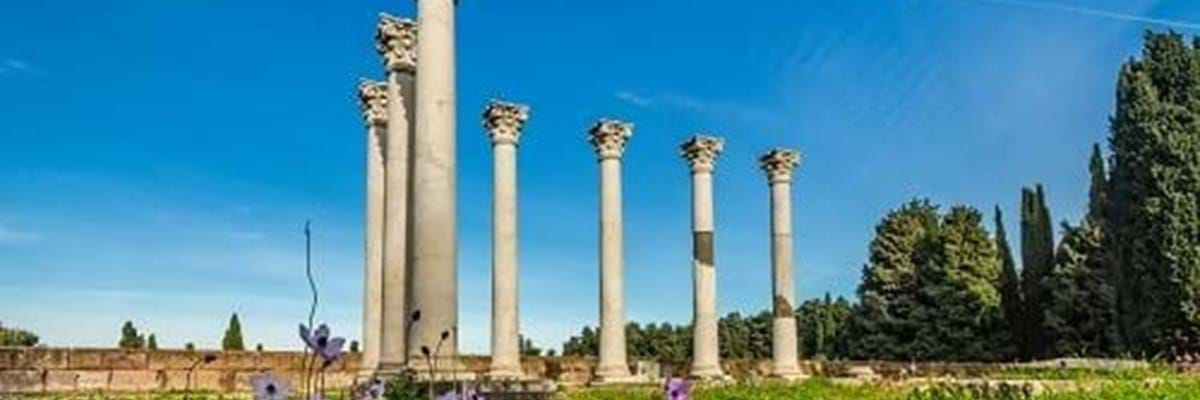The Sanctuary of Asklepios might be regarded as the most significant archaeological discovery on the island of Kos – the site consisted of a religious sanctuary to Asclepius, who was the Greek god of healing, and was also a centre regarded as having inspired many of the principles of modern medicine.
Hippocrates, known as the Father of Medicine, who gave his name to the ‘oath’ which qualified doctors take in many countries, worked and taught there in the 5th century BC.
The sanctuary is about 4km west of the town (there is an entrance charge with some concessions) and there is a cafe near the entrance which always welcome on warm days!
It is fascinating to wander for an hour or so around the extensive site, which is set over three levels, and includes the ruins of temples and baths. It is surrounded by forest, and the views from the highest level, which holds the remains of a large temple, include Kos Town and the coast of Turkey across the Aegean Sea.
The second level also has temple remains, including columns from a shrine to Apollo, the father of Asclepius. However, there is also evidence of baths and a network of pipes connecting to springs of water, for thermal treatment and hydrotherapy.
Sections of the ground floor are understood to have been waiting rooms for patients, and others for studying medicine.
It fell into ruin in the middle of the 6th century, when the site was plundered by the Knights of St John for building work elsewhere on the island, including the Castle of the Knights overlooking the harbour.
There is a statue to Hippocrates, inscribed with part of the Hippocratic Oath, in the centre of Kos Town, as well as a 500-year-old plane tree, possibly descended from one under which he is said to have tutored students.



